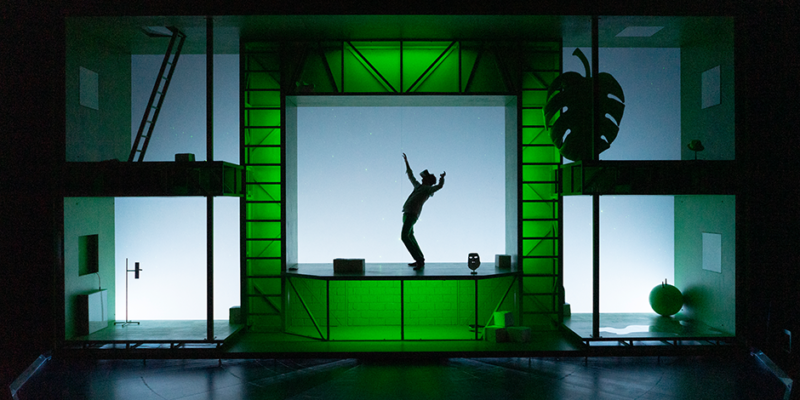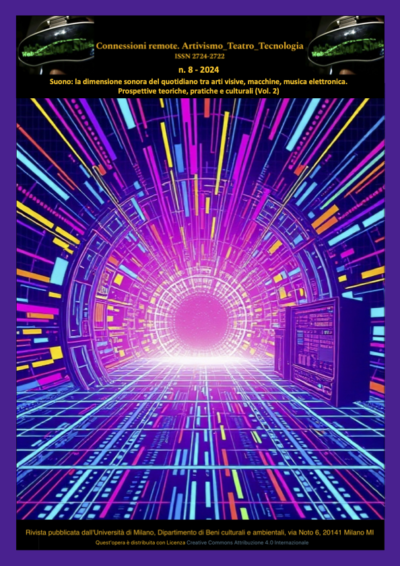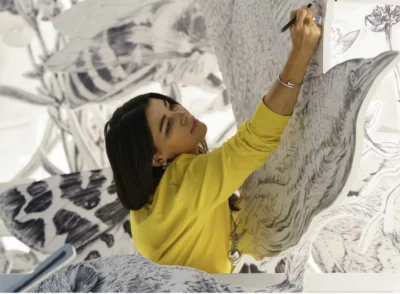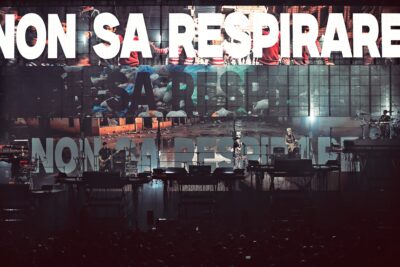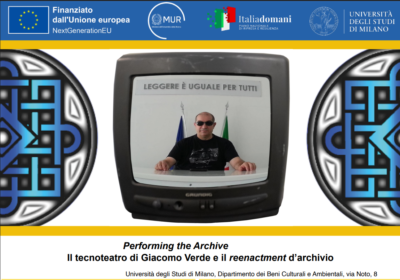The third issue of Connessioni Remote aims to provide a new contribution to the ongoing debate on the concept of liveness. The objective of this issue is to understand how the liveness dimension of artistic communication is transformed and widened in the current digital media eco-system.
The issue focus on performing arts as key agents in the complexification of liveness, and as a prime field for experimenting the live techno-media affordances.
The analysis of live communication in mediatized environments draws on a long and important legacy of analysis, starting with Walter Benjamin, continuing through authors who have examined the live dimension of mass media, such as Scannell (1989) and Thompson (1995), and then arriving at the well-known work of Philip Auslander (1999); Auslander, by posing liveness as a phenomenological condition rather than as an inherent property of a medium, has opened up a branch of study that has been exploring the conditions for the liveness-experience to emerge.
Reflection on liveness also underwent a significant acceleration with the pandemic crisis, which made the concept even more central, given the forced absence of “traditionally understood” live occasions.
The mass-media and online broadcasting of artistic, theatrical and musical events has made it possible to distribute and experience a wide range of cultural contents, to keep the artistic experimentation alive and to stimulate a remote relationship with audiences through performances. Most notably, it has allowed (and still allows) us to observe how liveness should be understood as a shifting phenomenon, where the sense of co-presence is re-articulated according to historical, cultural, media and experiential contexts.
In online contexts, for example, it is possible to observe what Auslander refers to as “digital liveness”, which does not derive solely from the properties of digital environments or from the audience constructon, but which involves “[…] specific relations between self and other, a particular way of ‘being involved with something’. The experience of liveness results from our conscious act of grasping virtual entities as live in response to the claims they make on us” (Auslander 2012, p. 10).
We can, therefore, understand liveness as a dispositive that produces a particular subject position, which depends on certain institutional discourses and frames, which is built relationally between audience members, between contexts of use and between technologies.
Liveness is a complex process that needs to be observed by looking at the reflections on the ecosystem of multimedia arts (Balzola, Monteverdi), the digital experimentation on theatre (Giannachi, Monteverdi, Pizzo) and the processes of crossmediality, intermediality and transmediality of performing arts.
On this basis, it is worth understanding which liveness dispositifs are active in the present performative and artistic experiments. Which re-articulations of the “here and now” have been produced intermedially and transmedially, and on a creative, poetic and dramaturgical level? Which new forms of tele-presence with participants and audiences have been developed? In which way have the bodily and haptic experience of digital environments been employed?
The need of artists and theatre organisations to mitigate the closure of theatres and live events during the lockdown, marked a step forward in the research on the different gradients of liveness (Gemini, Brilli, Giuliani 2020), which began with 20th century artistic experiments and continues in the numerous investigations of contemporary performance artists.
This third issue of Connessioni Remote intends to map the performative practices that reflect on the dimensions of liveness, both in offline and online contexts.
Contributions may address but are not limited to the following topics:
- review of studies and research on the theme of liveness in mediatised contexts;
- analysis of multimedia, transmedia, intermedial liveness practices;
- performing arts during the pandemic: between streaming and archives;
- digital liveness and platforms: case studies on Instagram, YouTube, Zoom, Telegram, Twitch, etc.;
- digital liveness and networked publics;
- re-elaboration of the concept of liveness in the light of recent artistic and media reflections and experimentations;
- audience experiences of liveness.
Authors are invited to submit abstracts of a maximum of 1000 characters including spaces on the above-listed topics in Italian or English together with 4-5 keywords.
Abstracts should be sent by 15 October 2021 to rivistaconnessioni.remote@gmail.com.
The Editorial Board will select a maximum of 10 abstracts based on thematic and methodological innovativeness for the current critical debate. Authors will be contacted by email by the editorial board to submit the final text through the OJS platform by registering online. Full articles must be between 30,000 and 40,000 characters long, including spaces, notes and bibliography, and must be unpublished. Authors are requested to consult in advance the guidelines for the graphic editing of the article and the editorial standards. Articles not following these guidelines will be rejected. Articles of adequate quality and adherence to the objectives of the Journal will be reviewed and subjected to double blind refereeing.
For further information: rivistaconnessioni.remote@gmail.com

